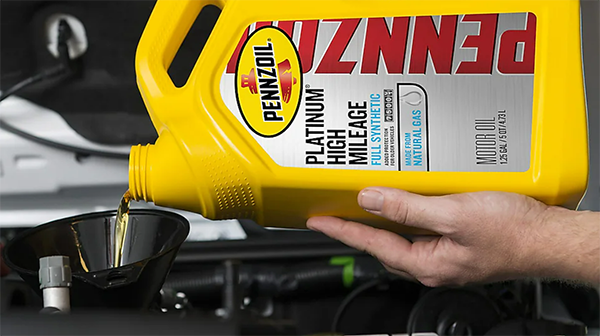To help maintain high performance and a longer life expectancy for your engine, motor oil is essential. Not only does it help to lubricate your vehicle’s engine, it also offers many additional benefits, including reducing friction and wear on moving parts, cooling the engine down, and keeping it clean.
Motor oil allows everything to run smoothly, and protects the engine from damage, which can improve your vehicle’s mileage. Below are answers to the top five most searched questions about motor oil so you can learn how to help maintain longer engine life and avoid mechanical breakdowns.
1. What are the main functions of motor oil?
Motor oil helps lubricate the engine’s different moving parts while helping to reduce friction and prevent engine wear. Motor oil also incorporate additives to help neutralize acids, manage the by-products of combustion, prevent thermal breakdown and helps to keep metal surfaces clean. Lastly, it is there to help regulate engine temperature and protect the engine from corrosion. Practicing proper lubrication maintenance is imperative to maintaining engine performance and life expectancy of the engine.
2. How do I know which grade of motor oil to use?
When deciding on the type of motor oil for your vehicle, check the owner’s manual, to see what SAE viscosity type of motor oil is recommended for that specific vehicle. Engines are built with specific standards and specifications to ensure performance, protection, and engine service life. Be sure to choose the recommended oil viscosity type for your vehicle, as the wrong type can decrease engine performance and possibly damage your engine. If you’re unsure what type of motor oil your vehicle requires, check out the Pennzoil oil selector. Here, you can input the make and model of your vehicle to confirm which Pennzoil motor oil is right for you!
3. What are the different types of motor oil?
There are four different varieties of motor oil: high-mileage motor oil, synthetic motor oil, synthetic blend motor oil, and conventional motor oil. A specialty oil like high-mileage motor oil is specially formulated for older engines with 75,000 miles or more. It is designed to slow down the effects of wear and reduce oil consumption due to wear. Synthetic motor oil is the most premium option which goes through a chemically engineered process, like Pennzoil Platinum motor oils. It is designed for premium performance in high and low temperatures, protection from wear, better fuel economy, and to maintain engine cleanliness.

4. What are the signs that you are low on motor oil?
The most obvious and initial sign of low motor oil in your vehicle is the engine light that pops up on your vehicle’s dashboard. Another sign can be a burning oil smell, strange noises, or reduced engine performance. Maintaining proper oil levels can help you avoid engine wear or damage resulting from low oil levels. It is crucial to regularly check your oil level to prevent damage to the vehicle.

5. How often should I replace my vehicle’s motor oil?
Replacing the motor oil in your vehicle can vary depending on several conditions. Driving styles, the age of the vehicle, severity of use and weather conditions can all impact how your engine operates. Miles traveled, type of oil used, and oil quality can also influence oil performance and drain interval. Following your vehicle’s owner’s manual on how often to change the oil is the most beneficial way to maintain and extend the life of your engine. Since every vehicle and engine is different, the best preventive maintenance is regular oil changes and checking your oil level regularly.
Regular oil maintenance (oil changes) and keeping your oil level at optimal level help to regulate proper lubrication, remove contaminants and prevent oil starvation, which can lead to wear, poor engine performance and shorten engine life over time.













